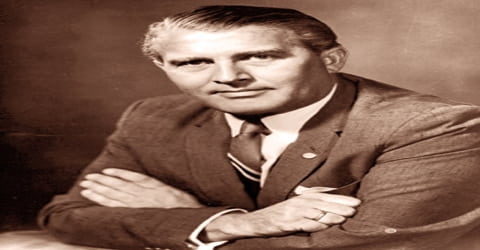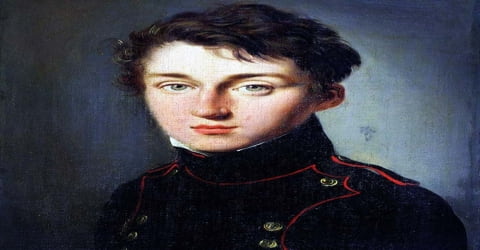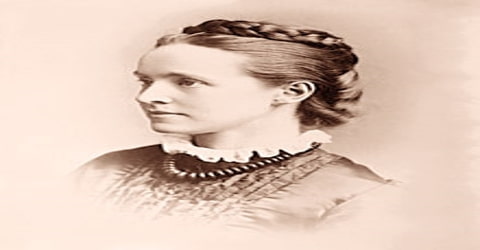Biography of Wernher von Braun
Wernher von Braun – German-American aerospace engineer and space architect.
Name: Wernher Magnus Maximilian Freiherr von Braun
Date of Birth: March 23, 1912
Place of Birth: Wirsitz, Posen Province, German Empire (now Wyrzysk, Poland)
Date of Death: June 16, 1977 (aged 65)
Place of Death: Alexandria, Virginia, U.S.
Occupation: Space Architect
Father: Magnus Freiherr Von Braun
Mother: Emmy Von Quistorp
Spouse/Ex: Maria Luise von Quistorp (m. 1947-1977)
Children: Margrit Cécile von Braun, Iris Careen von Braun, Peter Constantine von Braun
Early Life
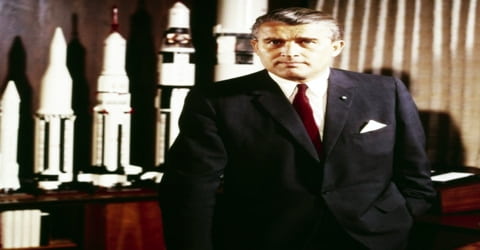
A German engineer who played a prominent role in all aspects of rocketry and space exploration, first in Germany and after World War II in the United States, Wernher von Braun was born on March 23, 1912, in the small town of Wyrzysk, in the Posen Province, in what was then the German Empire and is now Poland. He was the leading figure in the development of rocket technology in Germany and a pioneer of rocket technology and space science in the United States.
In his childhood, he was not particularly good at mathematics and physics but after he was gifted a telescope, by his mother his interest in astronomy was stimulated. He eventually topped his class and went on to obtain a bachelor’s degree in engineering. Soon, he received a research grant for his scientific works and later received a doctorate in Physics. He experimented on liquid-fueled rocket aircraft and developed V-2 ballistic missiles, which the German forces deployed against Britain without his approval. Due to his disapproval of military use of his rockets, he was arrested on fake espionage charges by the Gestapo, the ‘Secret State Police’ of Nazi Germany.
While in his twenties and early thirties, von Braun worked in Nazi Germany’s rocket development program. He helped design and develop the V-2 rocket at Peenemünde during World War II. Following the war, he was secretly moved to the United States, along with about 1,600 other German scientists, engineers, and technicians, as part of Operation Paperclip. He worked for the United States Army on an intermediate-range ballistic missile (IRBM) program, and he developed the rockets that launched the United States’ first space satellite Explorer 1.
Towards the end of WWII, his team surrendered to American forces, where he and his team began designing US ballistic missiles and later, he became the Director of NASA’s new Marshall Space Flight Centre. He is regarded as one of the greatest German weapon specialists and is hailed as one of the most prominent figures of space exploration.
Childhood, Family and Educational Life

Wernher von Braun, in full Wernher Magnus Maximilian Freiherr von Braun, was born on March 23 in 1912 into an aristocratic family in Wirsitz, Germany (now Wyrzysk, Poland), and was the middle child of three sons. He belonged to a noble Lutheran family, and from birth, he held the title of Freiherr (equivalent to Baron). The German nobility’s legal privileges were abolished in 1919, although noble titles could still be used as part of the family name. His father Magnus Freiherr von Braun, served as a Minister of Agriculture in the Federal Cabinet during the Weimar Republic. His mother, Emmy von Quistorp could trace her lineage to medieval European royalty.
The family moved to Berlin in 1915, where his father worked at the Ministry of the Interior.[ Here in 1924, the 12-year-old Wernher, inspired by speed records established by Max Valier and Fritz von Opel in rocket-propelled cars, caused a major disruption in a crowded street by detonating a toy wagon to which he had attached fireworks. He was taken into custody by the local police until his father came to get him. Wernher learned to play both the cello and the piano at an early age and at one time wanted to become a composer. He took lessons from the composer Paul Hindemith. The few pieces of Wernher’s youthful compositions that exist are reminiscent of Hindemith’s style. He could play piano pieces of Beethoven and Bach from memory.
In 1925 Wernher attended a boarding school at Ettersburg Castle and during his early years there, he didn’t excel in mathematics or physics. Then he discovered the book “Die Rakete zu den Planetenräumen” (By Rocket into Interplanetary Space) and this book inspired him to hone his skills in mathematics and physics because space travel was something which had always fascinated him. After his schooling, von Braun enrolled at the Berlin Institute of Technology in 1930 where he joined the “Spaceflight Society” and assisted Willy Ley in tests he was conducting for liquid-fueled rockets.
In 1932, Wernher graduated with a Bachelor’s degree in aeronautical engineering, after which, he joined the University of Berlin to study Physics. Captain Walter R.Dornberger, who was in charge of solid-fuel rocket research, helped this young rocket scientist to obtain a research grant from the Ordnance Department in Germany. Captain Walter was convinced of the young scientist’s competence and the underlying military potential of liquid-fuel rockets. Two years later Wernher received a Ph.D. in physics from the University of Berlin. His thesis, which, for reasons of military security, bore the nondescript title “About Combustion Tests,” contained the theoretical investigation and developmental experiments on 300- and 660-pound-thrust rocket engines.
Personal Life
Wernher von Braun had a charismatic personality and was known as a ladies’ man. As a student in Berlin, he would often be seen in the evenings in the company of two girlfriends at once. He later had a succession of affairs within the secretarial and computer pool at Peenemünde.
In January 1943, Wernher von Braun became engaged to Dorothee Brill, a physical education teacher in Berlin, and sought permission from the SS Race and Settlement Office to marry. However, the engagement was broken due to his mother’s opposition.
On March 1, 1947, Wernher married Maria Luise von Quistorp, his maternal cousin in a Lutheran Church in Germany. On December 9, 1948, the von Brauns’ first daughter, Iris Careen, was born at Fort Bliss Army Hospital. The von Brauns had two more children, Margrit Cécile in 1952, and Peter Constantine in 1960.
Career and Works

Wernher von Braun’s career can be divided into two main timelines; one where he worked for the Nazis, and the other when he was working for the United States. While working for the Nazis, von Braun became known as the leader of the “rocket team” who developed the V-2 missile used in World War II. Scholars still have discussions about his involvement in the manufacturing of these ballistic missiles which were supposedly products of forced labor in the factory known as Mittelwerk.
In 1940, Wernher joined the SS and was given the rank of Untersturmführer in the Allgemeine SS and issued membership number 185,068. When shown a picture of himself standing behind Himmler, von Braun claimed to have worn the SS uniform only that one time, but in 2002 a former SS officer at Peenemünde told the BBC that von Braun had regularly worn the SS uniform to official meetings. He began as an Untersturmführer (Second lieutenant) and was promoted three times by Himmler, the last time in June 1943 to SS-Sturmbannführer (Major). Von Braun later claimed that these were simply technical promotions received each year regularly by mail.
The V-2 first flew in October of 1942. However, by late 1944, it became clear to von Braun that Germany could not defeat the Allied forces, so he made plans for his future after the war. Before the Allies captured their V-2 rocket complex, von Braun had surrendered along with 500 rocket scientists who had also been working on the project. He also surrendered test vehicles and plans for other rockets to the Americans.
By 1943 Wernher von Braun’s rocket complex was the primary target of the Allied forces (America, France, and Great Britain). When Germany was near collapse, von Braun evacuated his staff to an area where the Americans might capture them. He reasoned that the United States was the nation most likely to use his resources for space exploration. The rocket team, which consisted of more than five thousand coworkers and their families, surrendered to U.S. forces on May 2, 1945.
In 1945, Wernher and his entire team surrendered to the American troops willingly and were at the U.S. Army Ordnance Corps test site at White Sands, where they reworked on the captured V-2s for ‘high altitude’ research studies.
In 1950, at the start of the Korean War, Wernher von Braun and his team were transferred to Huntsville, Alabama, his home for the next 20 years. Between 1952 and 1956, Wernher led the Army’s rocket development team at Redstone Arsenal, resulting in the Redstone rocket, which was used for the first live nuclear ballistic missile tests conducted by the United States. He personally witnessed this historic launch and detonation. Work on the Redstone led to the development of the first high-precision inertial guidance system on the Redstone rocket. As director of the Development Operations Division of the Army Ballistic Missile Agency, von Braun, with his team, then developed the Jupiter-C, a modified Redstone rocket. The Jupiter-C successfully launched the West’s first satellite, Explorer 1, on January 31, 1958. This event signaled the birth of America’s space program.
After moving to Huntsville, Alabama, in 1952, Wernher became a technical director (later chief) of the U.S. Army ballistic-weapon program. Under his leadership, the Redstone, Jupiter-C, Juno, and Pershing missiles were developed. In 1954 a secret army-navy project to launch an Earth satellite, Project Orbiter, was thwarted. The situation was changed by the launching of Sputnik 1 by the Soviet Union on October 4, 1957, followed by Sputnik 2 on November 3. Given leave to proceed on November 8, Braun and his army group launched the first U.S. satellite, Explorer 1, on January 31, 1958. In 1955 he became a U.S. citizen and, characteristically, accepted citizenship wholeheartedly. During the 1950s Wernher became a national and international focal point for the promotion of space flight. He was the author or coauthor of popular articles and books and made addresses on the subject.
Wernher von Braun worked with the United States Army for 15 years for the country’s development of ballistic missiles. He was a major part of a military operation known as Project Paperclip, and along with other members of what used to be his “rocket team,” they worked in Fort Bliss, Texas. On 31st January 1958, the rocket development team lead by Wernher von Braun successfully launched the first American artificial earth satellite, Explorer I, using a modified Redstone rocket.
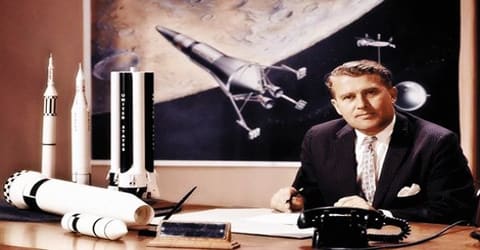
In 1960, Wernher became the first Director of the Marshall Space Flight Centre that was opened by NASA. He occupied this position till 1970. He became the chief architect of ‘Saturn V’ launch vehicle, which successfully launched the ‘Apollo spacecraft’ to the Moon.
Wernher resigned from NASA in July 1972 to become vice president for engineering and development with Fairchild Industries of Germantown, Maryland. Besides his work for that aerospace firm, he continued his efforts to promote human space flight, helping to found the National Space Institute in 1975 and serving as its first president. On December 31, 1976, he retired from Fairchild Companies due to health problems. In 1987, this institute merged with L5 society, another space society, to form the ‘National Space Society’.
In attempting to justify his involvement in the development of the German V-2 rocket, Wernher stated that patriotic motives had outweighed whatever qualms he had had about the moral implications of his nation’s policies under Hitler. He also emphasized the innate impartiality of scientific research, which in itself, he said, has no moral dimensions until its products are put to use by the larger society. During his later career, Wernher received numerous high awards from U.S. government agencies and from professional societies in the United States and other countries. He also authored several books like ‘Conquest of the Moon-1953’ and ‘Space Travel-A History-1985’.
Awards and Honor
In 1943 and 1944, Wernher von Braun was honored with the ‘War Merit Cross’, First Class with Swords and the ‘Knights Cross of War Merit Cross’, respectively.
In 1975, Wernher von Braun received the prestigious ‘National Medal of Science’.
In 2007, Wernher was inducted into US Space Camp Hall of Fame.
Death and Legacy

On June 16, 1977, Wernher von Braun died of pancreatic cancer in Alexandria, Virginia, at the age of 65. He was buried at the Ivy Hill Cemetery in Alexandria, Virginia.
Wernher’s name is synonymous with the V-2 rocket. In the 1940s, he worked With Captain Walter R.Dornberger and they successfully launched missiles which included the A-4. Later, it came to be known as the V-2 which means ‘Vengeance Weapon-2’. In 1944, the V-2 bomb was deployed by German forces against the Britain troops as Adolf Hitler was keen on using it for military purposes.
Wernher featured in various TV shows and movies like ‘Man in Space’ and ‘Wernher von Braun- Rocket Man for War and Peace’. He has also been mentioned in various songs like ‘Oh Carolina’ and ‘Progress vs. Pettiness’. His name has also appeared in several literary works like ‘Space by James Michener’ and ‘Gravity’s Rainbow by Thomas Pynchon’.
Wernher Von Braun took a very conservative approach to engineer, designing with ample safety factors and redundant structure. This became a point of contention with other engineers, who struggled to keep vehicle weight down so that payload could be maximized. As noted above, his excessive caution likely led to the U.S. losing the race to put a man into space with the Soviets. Krafft Ehricke likened von Braun’s approach to building the Brooklyn Bridge. Many at NASA headquarters jokingly referred to Marshall as the “Chicago Bridge and Iron Works”, but acknowledged that the designs worked. The conservative approach paid off when a fifth engine was added to the Saturn C-4, producing the Saturn V. The C-4 design had a large crossbeam that could easily absorb the thrust of an additional engine.
This German rocket scientist collaborated with Walt Disney and was made technical director at Disney studios for three television films on space exploration.
Information Source:
